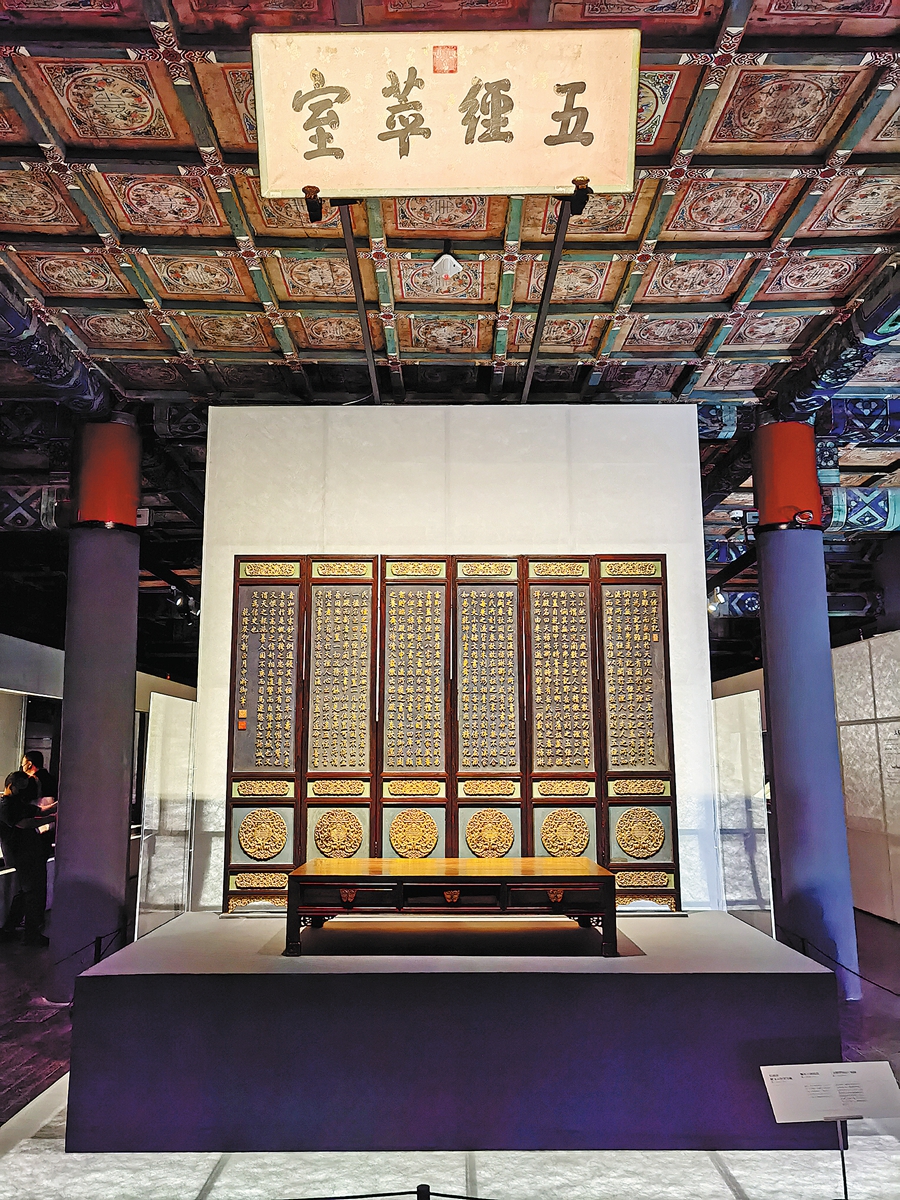Spaces where thought can spring eternal
 0 Comment(s)
0 Comment(s) Print
Print E-mail China Daily, September 6, 2022
E-mail China Daily, September 6, 2022

Guqin, the traditional Chinese plucked musical instrument associated with a sense of unadorned antiquity, may also create the perfect atmosphere for a study. Watching an exhibited guqin from the Southern Song era (1127-1279) being played, visitors can imagine a scenario in which ancient sages refer to its slow but refined melody for mental cultivation.
The great poet Tao Yuanming (365-427), also known for his reclusive lifestyle, once said: "In my younger years, I remained aloof to worldly affairs, and literature and music were my haven."
Wang says that it was this musing that inspired him to design the exhibition. When hung on the wall of the gallery, Tao's words may also enlighten visitors, encouraging them to think of their own paths they find to sneak away from their mundane daily routines, if only for a little while.
The Orchid Pavilion Preface, created by the 4th-century calligraphic guru Wang Xizhi, is probably one of the everlasting Chinese literary classics about a gathering of literati. Though being outdoors, the pavilion in present-day Zhejiang province is perhaps among the most famous "studies" in China.
The whereabouts of the original work is now unknown, but facsimiles from generations of calligraphers still enable modern people to enjoy it and envision the glamour of the event described. As such, one of these copies, made by Mi Fu, one of the most acclaimed calligraphers from the Northern Song era (960-1127), is a must-see at the exhibition.
Apparently, this poetic ethos was inherited by his son Mi Youren. In a scroll painting named Xiaoxiang Qiguan Tu ("wonders on the river"), the junior Mi adeptly depicts the mountains, clouds, sky and the river. In their respective studies, they created a new style of landscape painting that had a long-lasting historical influence.
Wang also particularly recommends the viewing of another iconic painting from the Northern Song era: Keshi Pingyuan Tu ("rugged stones reaching far") by Guo Xi. Autumn falls on the wilderness and a slope is separated by a zigzagging river. The twirling and twisting branches of a dried tree resemble a claw, and almost half of the picture was just left empty, creating space for viewers to fill with their imagination.
Like a reclusive artist itself, this painting has not been publicly exhibited for more than 20 years.
Other key exhibits are created by household names from Chinese history, like Wen Tianxiang, the Southern Song general who showed his loyalty and strong spirit in fighting until the final years of the dynasty.
Being a member of the literati, who could retreat from worldly noise, became the ultimate goal for many rulers, as this exhibition shows. When Zhu Youjian, the last emperor of the Ming Dynasty (1368-1644), wrote three words si wu xie ("mind remains innocent") on a giant paper, he might have truly wanted to forget the social crisis that marred his reign and regain inner peace.
And Emperor Qianlong of the Qing Dynasty would probably have been a scholar or artist if he was not bestowed the throne. Hand-copying the long paragraphs of Da Bao Zhen ("admonitions for the rulers"), he also wanted to remind himself of proper behavior, as demanded by ancient scholars.
As pine, plum and bamboo were widely honored by ancient Chinese literati for their unswervingly strong spirit in winter, Emperor Qianlong also once wrote in a poem: "How I hope to befriend them amid frost and snow; our innate virtues strike a chord just as voices echo."
As Wang points out, the exhibited artworks show the ancient Chinese literati's lasting pursuit for self-cultivation, which means to "rectify the mind, form the character, and regularly reflect on one's conduct".
"They regard it as the foundation of humanity," he explains. "Only by solidifying this foundation can one bring harmony to the family, the country, and the world. Virtue is always important, no matter whether you are overseen by others."
Ren Wanping, deputy director of the Palace Museum, says that the exhibition also has its modern significance, encouraging people to think about what a study means in a modern context.
"People are exposed to a vast cyberspace and numerous virtual worlds," she says. "But inside our hearts there is always space for an invisible 'study', for reading, thinking and reflection."
4d445196-bf04-4927-9b59-25383c0de07f.jpeg)




Go to Forum >>0 Comment(s)